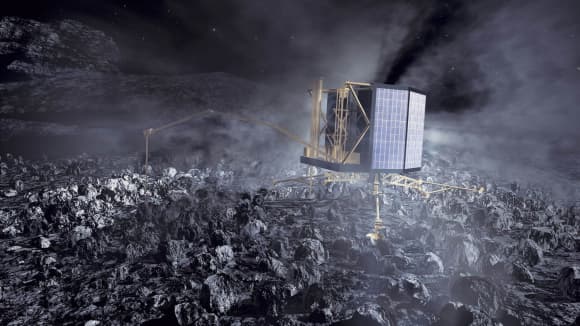It has been awhile, nearly seven months, in fact; however, after spending over half a year hibernating in the black recesses of space, Rosetta's Philae lander has finally woken up.
The small craft has been quietly resting somewhere on the surface of Comet 67P/Churyumov-Gerasimenko, a 2.5-mile-wide (4-kilometer) comet that orbits our solar system. Scientists lost contact with Philae after it bounced twice during its landing and came to rest in a shaded spot, which made recharging its batteries rather difficult.
We lost contact with Philae after it shut down on November 15th, 2015. At the time, it had been in operation on the comet for just 60 hours. Since March 12th, the Rosetta orbiter has been listening for signals from the small lander, and it finally got them.
After months of silence (on June 13th, 2015) the European Space Agency (ESA) announced that the Space Operations Center in Darmstadt got a signal from Philae, letting the space agency know that it is still alive and kicking.
At the present time, more than 300 data packets have been analyzed by scientists working at the Lander Control Center at the German Aerospace Center (DLR). So far, it seems that all systems are are working properly.
"Philae is doing very well. It has an operating temperature of -35ºC and has 24 Watts available," DLR Philae Project Manager Dr. Stephan Ulamec explained in a press release. "The lander is ready for operations." Even more promising, when scientists were analyzing the status data, they discovered that Philae had previously woke up and collected data. We just weren't able to receive it. As Ulamec notes, "We have also received historical data; however, the lander had not been able to contact us earlier."
For 85 seconds Philae "spoke" with the science team. That may not sound like too long, but it is enough time to collect vast amounts of important, one-of-a-kind data. And since we know that the lander is alive, scientists are waiting for the next opportunity to establish contact.
When this opportunity comes around, the team hopes that they will be able to access the more than 8000 data packets that are still in Philae's mass memory. Ultimately, it is this information that will give the DLR an idea of what happened to the lander after touchdown.
Share This Article
